Woodcock Silver Red Fox Aussie 549F
Hook: #14 upeyed nymph hook
Tying Thread: 14/0 Pale Yellow
Hackle: Woodcock shoulder hackle
Body: red fox underfur twisted in silver wire.
Thorax: medium coarse Aussie opossum.
This is the fly as typically shot with my little photo set-up.

This is the acrylic tub with ceramic magnets superglued to the side to hang on the metal post that usually holds the tweezers used for the other fly shots. So the lighting and background will be the same, hopefully providing some continuity from image to image. It was a plan.
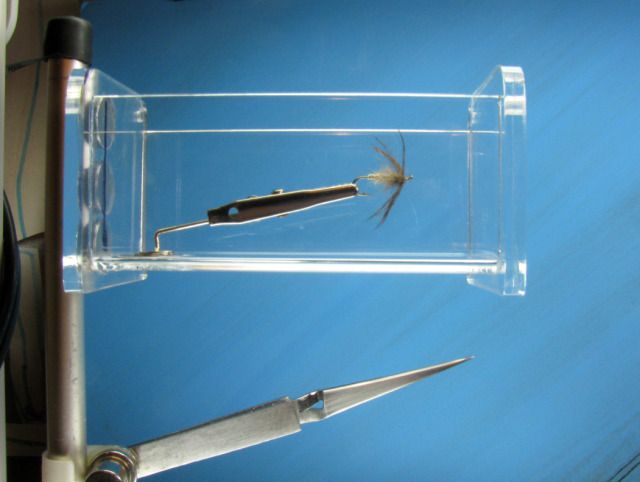
The fly shot in the tub without the water added.
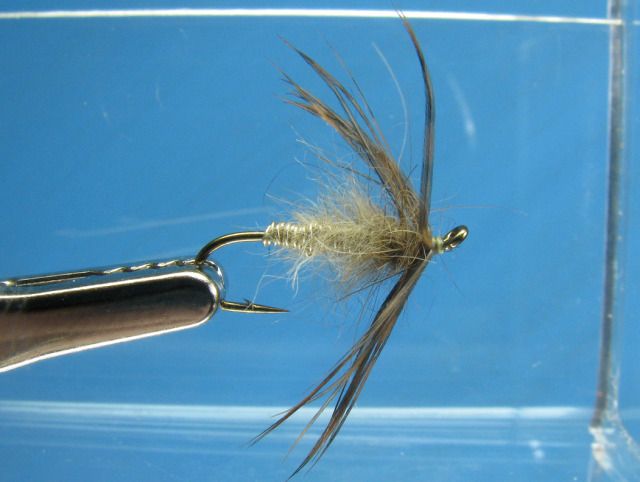
The fly with the tap water added. The bubbles clinging to the thorax/hackle area were greater and lessened by the time pics were worked out. The frustrating thing is the question of all the micro bubbles clinging to every surface and obscuring the materials. I've seen pics of nymphs underwater with this kind of effect, which I thought were crappy pics because I couldn't see the details of the nymph. I'm not so sure that is typical and I'm not at all convinced that these micro bubbles are typical of what happens to an artificial under water. To the contrary, most images that I've seen of flies underwater are quite clear, but there are some images showing these microbubbles. You'll get a better idea of what this does when I post the other images.

EDIT: 12-06-12 NEW IMAGE USING DISTILLED WATER
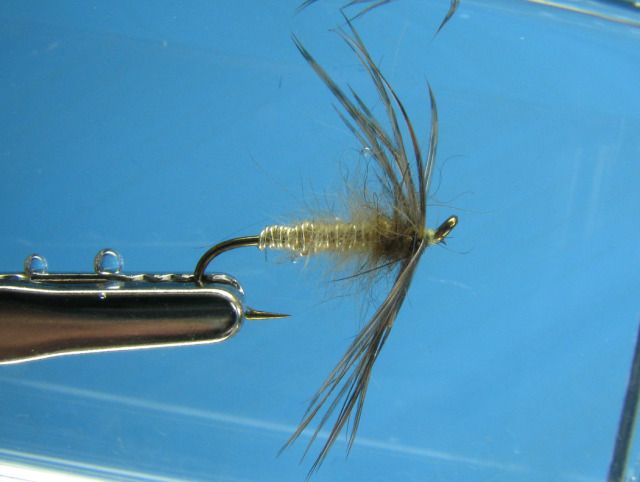
This is the fly photographed under typical mounting with the body wetted with a drop or two from a bodkin. It does do something to show the underbody through the dubbing, but is a very poor representation of what the body and hackle do when the fly is submerged. I have dropped flies in glass cups, and into small saucers to see the flies materials wet and better understand how they compliment one another.
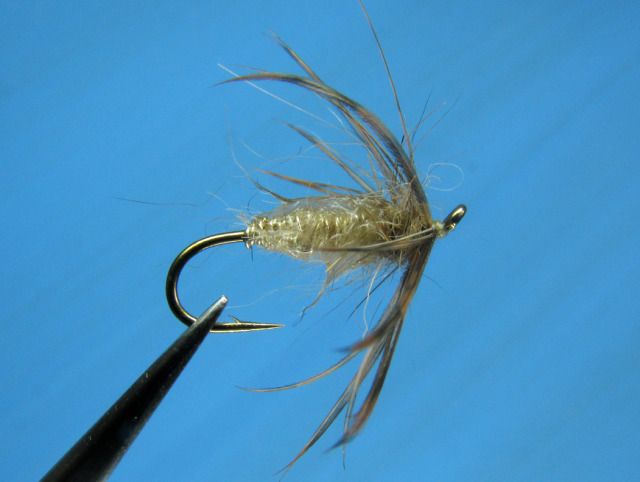
I have not seen them up this close before. With each fly that I have put into this container the hackles and dubbing seem to spread and almost repel from the body, as lively as I have seen with my naked eye, but more under a macro lens is even more revealing. I'm looking forward to trying different dubbing materials and combinations to see if there is something actually revealing from this process. At present, I find it a disappointment in many ways. There are flies that I have photographed by dropping water on them in the conventional way and the underbodies are more apparent than these images show.
But it's a start. I'll post a few more soon and maybe something useful will come of it. And then on to the speculations/suspicions about relevance, moving water and lighting in real life circumstances.
This is a fly I posted recently and hoped the wire underbody would be more evident, or at least something useful would be revealed. What is clear is the difference between the dubbing material dispersed from the body, and the micro bubbles that cling to every fiber. I have to wonder if stream water would have different properties, or if distilled water would create a different effect. Maybe filling the little tub with gin or vodka would be different. All to be determined.
Hen and Hare on copper wire 1530
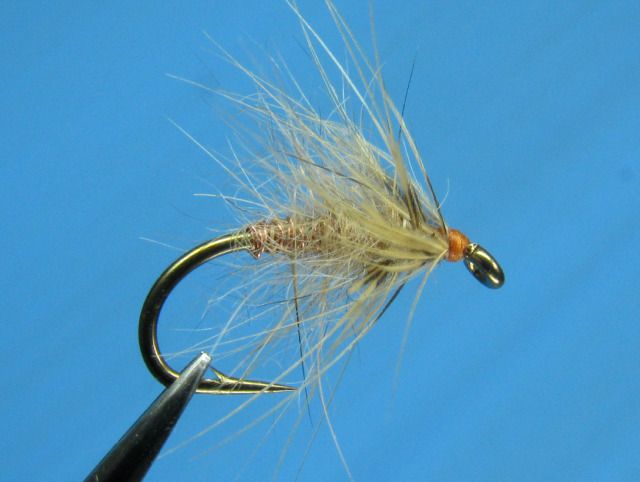

EDIT 12-06-12: NEW IMAGE ADDED


Any and all comments, criticisms and recommendations would be greatly appreciated.
EDITED IMAGES: THE INTENT OF THE POST WAS TO SHOW THE UNDERBODY WHICH FAILED DUE TO THE USE OF TAP WATER. THE USE OF ROOM TEMP DISTILLED WATER ALLOWED FOR A MUCH BETTER REPRESENTATION OF THE MATERIALS. UNFORTUNATELY, I LOST THE BENEFITS OF SHOOTING THE HYDROFUGE FROM THE TIME IT TOOK AND THE KNOCKING AROUND OF THE TANK. ALL ISSUES TO BE ADDRESSED.
w
